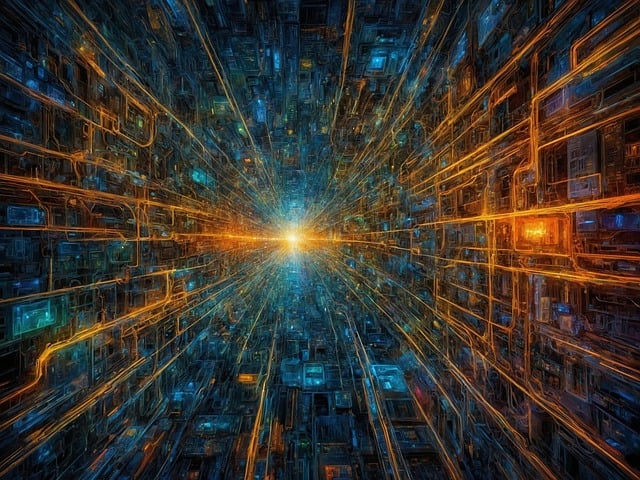AI-generated food blog content has transformed the culinary landscape using deep learning and vast datasets, mimicking human writing styles for engaging articles, recipes, and reviews. This process involves natural language processing (NLP) and transfer learning, enabling AI to analyze trends, user preferences, and ingredients for personalized insights and recommendations. A robust infrastructure, including powerful hardware like GPUs and TPUs, specialized software frameworks, and advanced tools for data preparation and deployment, powers this innovative format. By leveraging AI, food blog systems offer fresh content, personalized recommendations, and interactive features that cater to diverse audiences, revolutionizing content creation and enhancing user experiences.
“Unleash the power of Artificial Intelligence (AI) in the culinary world! This article explores the cutting-edge of AI, specifically focusing on how deep learning infrastructure enhances AI-generated food blog content. We’ll break down the essential components that form the backbone of these intelligent systems. From understanding core concepts to implementing and optimizing AI-powered solutions for food blogs, this guide offers valuable insights. Discover how AI is revolutionizing content creation, making it easier than ever to generate engaging and unique recipes and articles.”
- Understanding AI-Generated Food Blog Content: The Core Concepts
- Building Blocks of AI Business Deep Learning Infrastructure
- Implementing and Optimizing AI-Powered Food Blog Systems
Understanding AI-Generated Food Blog Content: The Core Concepts

The rise of AI-generated content has transformed various industries, and the culinary world is no exception. When it comes to AI-generated food blog content, understanding the core concepts behind its creation is essential. These models leverage deep learning algorithms and vast datasets to craft engaging articles, recipes, and reviews that simulate human writing styles. The process involves training on massive text corpora, allowing the AI to learn grammatical structures, culinary terminology, and even creative metaphors used in food blogging.
Key concepts include natural language processing (NLP), which enables machines to interpret and generate human-like text, and transfer learning, where pre-trained models are adapted for specific tasks. In the context of food blogs, AI can analyze trends, user preferences, and popular ingredients to create personalized content, offering unique insights and recommendations. By understanding these fundamental concepts, both creators and readers can appreciate the capabilities and limitations of AI-generated food blog content, fostering a deeper engagement with this evolving aspect of digital cuisine.
Building Blocks of AI Business Deep Learning Infrastructure

The foundation of any successful AI business, particularly those focusing on deep learning, lies in its infrastructure. This involves a robust blend of hardware and software components tailored to handle complex AI tasks, such as generating AI-driven food blog content. The building blocks include powerful processors like GPUs (Graphics Processing Units) and TPUs (Tensor Processing Units), which accelerate the training and inference processes crucial for deep learning models. These are supported by vast amounts of memory and efficient storage solutions to manage and access large datasets required for model development and deployment.
Beyond hardware, a seamless AI business deep learning infrastructure necessitates specialized software frameworks like TensorFlow or PyTorch, which simplify the creation and training of neural networks. Advanced tools for data preprocessing, model monitoring, and continuous integration/deployment (CI/CD) pipelines are also integral to maintaining efficiency and accuracy. In the context of AI-generated food blog content, this might include text generation models, natural language processing (NLP) tools, and image recognition algorithms, all working in harmony to create, edit, and visualize compelling culinary narratives.
Implementing and Optimizing AI-Powered Food Blog Systems

Implementing and optimizing AI-powered food blog systems is a game-changer for content creation, offering efficient solutions to enhance user experiences. By leveraging deep learning infrastructure, these systems can generate AI-created recipes, cooking tips, and culinary insights, ensuring a constant flow of fresh, engaging content. The technology enables personalized recommendations based on user preferences, making each reader’s journey unique and interactive.
For bloggers, this means streamlined workflows where AI assists in researching, drafting, and editing content, allowing more time for creative exploration. Optimized systems can also adapt to diverse audiences, translating complex culinary terms into accessible language and providing step-by-step guidance tailored to various skill levels. This not only caters to a broader readership but also drives engagement through interactive features powered by AI.
AI is transforming the way we create and consume content, and AI-generated food blog content is no exception. By understanding the core concepts and building blocks of AI business deep learning infrastructure, we can effectively implement and optimize AI-powered systems for food blogging. These advanced technologies enable dynamic, personalized content creation, enhancing user experiences and driving engagement. As AI continues to evolve, embracing these innovations will be key to staying ahead in the digital landscape of food blogging.
